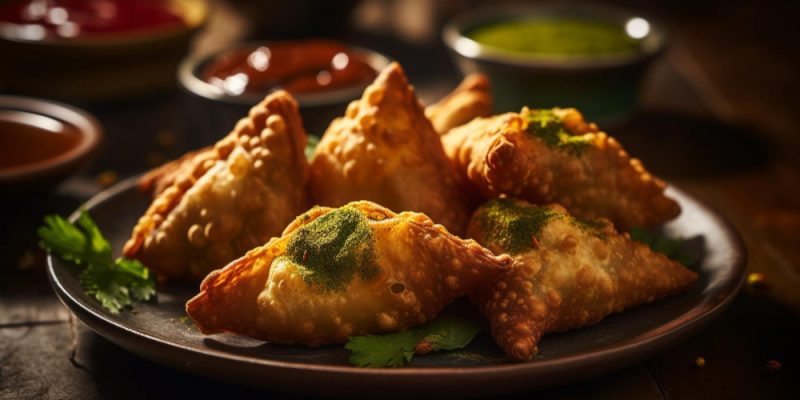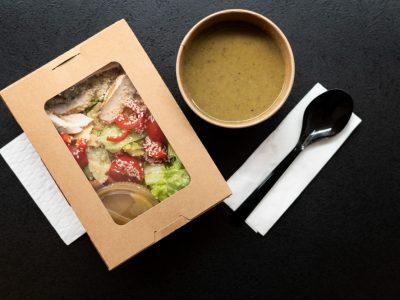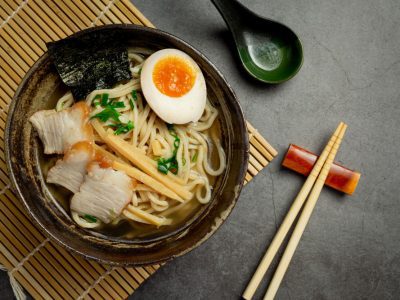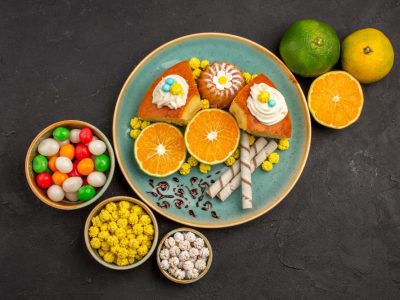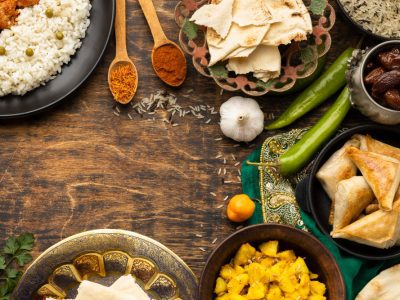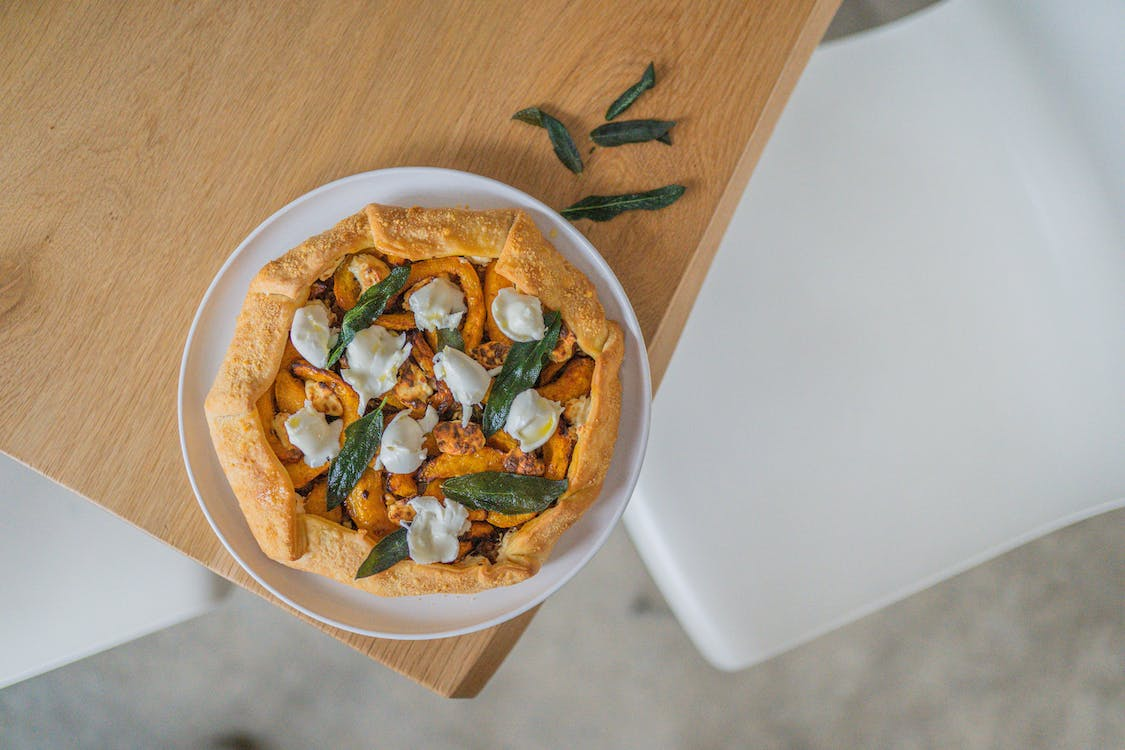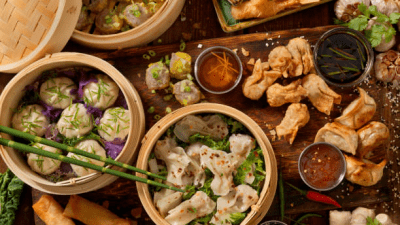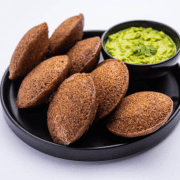Introduction to Street Food Culture and Samosas
The aromatics, textures, and flavours of Indian street food transport you to another dimension. One of the most famous and often eaten snacks is the samosa, which is one of the many delicious treats sold by street vendors. Famous all over India, this golden-brown, crispy pastry showcases the country’s varied and delicious cuisine. The samosa recipe is beloved all over the nation, whether it is served hot with masala chai, dipped in mint or tamarind chutney, or eaten as a fast snack on a busy street.
The adaptability of the samosa is its defining characteristic. The most popular kind has a spicy potato filling, but there are innumerable regional variants that put a new spin on this old favourite. This crispy treat has found its way to every corner of the country, with variations such as the keema samosas in Hyderabad and the patti samosas in Gujarat.
The samosa recipe has an intriguing history that spans centuries and many countries, despite its profound roots in Indian cuisine. One of the most interesting street foods in India right now, its history spans continents, generations, and the hearts of foodies everywhere.
Although samosas can be found at many places in Bangalore, including sweet stores, upscale restaurants, and street sellers, HOGR delivery makes it easy for foodies to get the greatest samosas in Bangalore without leaving the house. But let us take a look at the origins of this famous snack before we dive into new versions and improvements.
The History and Evolution of Indian Samosas
Indian Snacks History: The Journey of Samosa
Various civilisations, travellers, and empires have shaped the samosa recipe over the years, resulting in its current form. Originally from Central Asia and the Middle East, this little triangle-shaped pastry stuffed with ground meat, nuts, and spices was called Sanbosag or Sambusa. Because they could be easily transported and kept fresh for extended periods of time along trade routes, these first samosas were well-liked by merchants and traders.
Traders from the Turkic and Persian empires introduced the samosa to the Indian subcontinent in the thirteenth and fourteenth century. Famous for their lavish banquets, the Mughal emperors of India popularised samosas and made them even more delicious by stuffing them with aromatic spices, minced lamb, and dry fruits.
The samosa recipe changed throughout the years to reflect regional preferences and available components. Especially in the northern parts of the country, vegetarian samosas packed with potato and served with mint sauce or sour tamarind chutney were the most popular. Samosas became a classic street food snack when street sellers started selling them freshly cooked.
Regional Samosa Variations Across India
As the samosa made its way across India, regional variations emerged, influenced by ingredients, cooking methods, and spices. A few of the most well-liked regional samosa recipes are these:
1. North Indian Aloo Samosa
The traditional stuffing of samosas from North India consists of a spicy potato, pea, cumin, coriander, and garam masala mixture. Served with tamarind and mint chutney, this version is deep-fried till it is crispy and golden brown.
2. Hyderabadi Keema Samosa
The samosas in Hyderabad are loaded with seasoned minced meat (keema), giving them a non-vegetarian touch. Served with hot chai and green chutney, these keema samosas are a Ramadan favourite.
3. Bengali Singara
The use of all-purpose flour and ghee gives Bengali samosas, called Singara, a significantly flakier crust. For added crunch, the stuffing frequently incorporates peanuts, potatoes, and cauliflower.
4. Gujarati Patti Samosa
Instead of thick dough, the Gujarati style samosas, called patti samosas, use thin, crispy wrappers. These are commonly enjoyed as a snack during tea time, filled with spicy lentils or green peas.
5. South Indian Onion Samosa
South Indian onion samosas are a delightful twist on the classic samosa. These mouth-watering pockets are filled with a blend of spicy onions and semolina, then delicately folded in thin sheets and cooked till golden brown.
As a result of regional variations, samosas can take on sweet, spicy, or savoury flavours, making them a truly adaptable snack.
Making the Crispiest Samosas at Home
Home cooks, there are a few essential procedures to producing crispy samosas:
1. Preparing the Dough
To make the flaky crust, mix together all-purpose flour, salt, carom seeds (ajwain), and ghee or oil. Mix the cold water into the dough and knead until it becomes firm. Set aside for 30 minutes to allow it to relax and become elastic.
2. Crafting the Perfect Filling
To make samosas without meat, boil potatoes and green peas and add spices like cumin, red chilli powder, garam masala, and coriander. The filling for beef samosas is a delicious combination of minced meat, onions, garlic, ginger, and whole spices.
3. Assembling and Frying the Samosas
Before packing the cones, roll out the dough, cut it into semicircles, and fold each one in half. To get a golden brown and crispy texture, deep fried at a medium temperature (170°C).
Conclusion
From its Persian and Central Asian roots, the samosa recipe has undergone a remarkable transformation to become a beloved street snack in India. There are innumerable regional variants across the country as a result of its adaptation and transformation over the years. Every variation of the samosa, from the traditional North Indian potato filling to the spicy Hyderabadi keema samosa or the mild South Indian onion samosa, has its own distinct taste and cultural importance.
More than just a snack, samosas represent the Indian passion for spicy, crunchy, and flavourful street cuisine. Whether it is a mid-day snack, a festive dish, or a comforting accompaniment to a mug of chai, samosas are a beloved part of Indian cuisine.
If you are looking for the greatest samosas in Bangalore, HOGR delivery makes it easy to order from restaurants, cafés and speciality snack stores that are highly rated. Get the crispiest, tastiest samosas delivered right to your home with HOGR delivery, whether you are in the mood for a spicy aloo samosa, a flaky Bengali singara, or a meaty keema samosa.
One thing is clear, though: samosas, whether made at home with a traditional recipe or ordered through HOGR delivery from the top restaurants in Bangalore, will always be a delicious and classic favourite among Indian food.
A food enthusiast and a blogger – someone who likes to eat and write about it. I’m passionate about exploring different cuisines and challenging my palette. I give into my food craving regularly and am often on the hunt to find my new favorite food place in town.
